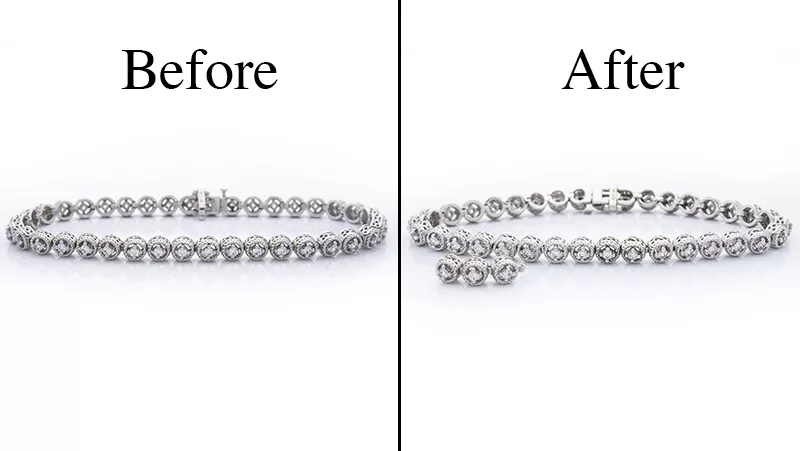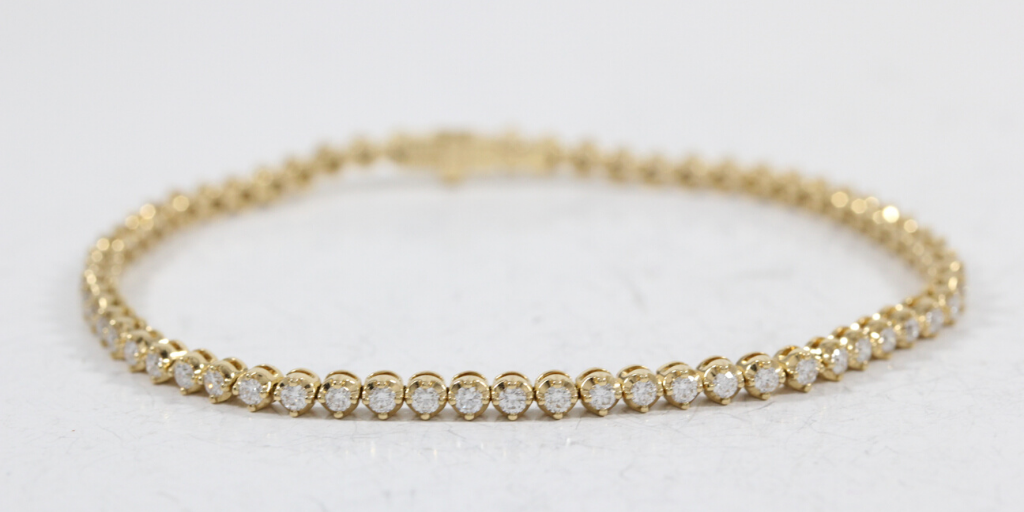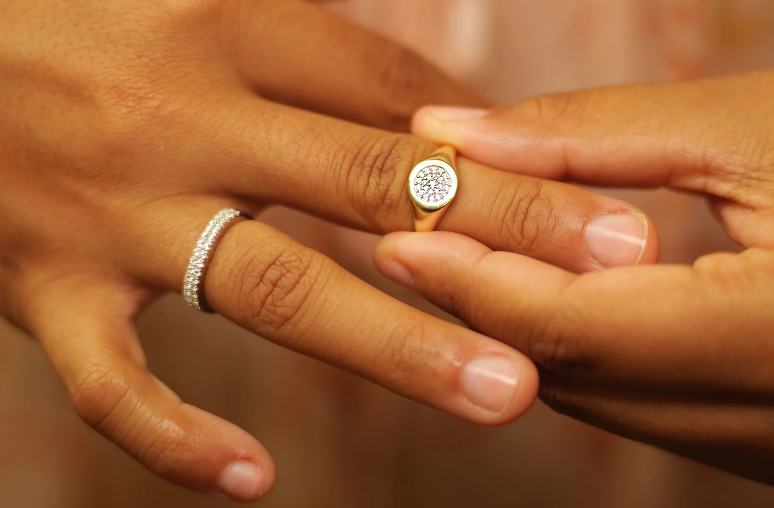Bracelet Resizing 101: Everything You Need to Know
Written by Anna Currell
March 7, 2023

Bracelets are a fun, expressive accessory. There are so many exciting trends and different ways to wear them: bangles, bolos, beaded bracelets, jeweled tennis bracelets. But sometimes it can be hard to find the perfect fit. A bracelet that’s too loose may slip off your wrist, while one that’s too tight can be uncomfortable to wear. The good news is that most bracelets can be resized to fit your wrist perfectly with just a little help. In this article, we’ll go over everything you need to know about bracelet resizing. Let’s dive in!
What is Bracelet Resizing?
Bracelet resizing is the process of adjusting the length of a bracelet to fit your wrist comfortably. Depending on the type of bracelet you want to resize, there are a few methods a jeweler can use. If it’s a chain bracelet, they can lengthen or shorten it by removing or adding links and then reconnecting the bracelet using a soldering iron. The process of resizing a bangle bracelet is similar to ring resizing; a jeweler will cut the bracelet, remove or add the desired length, and then weld it back together at the right size.

Types of Bracelets That Can be Resized
Styles like link bracelets, bangle bracelets, and cuff bracelets can usually be resized pretty easily, however, certain bracelets made from wire or featuring intricate designs, might not be suitable for resizing. You can always consult a jeweler if you’re unsure about whether or not it’s possible to resize your bracelet.
When to Resize Your Bracelet
There are several reasons you might need to resize your bracelet. Some popular concerns include:
- Your wrist size has changed. People’s wrist sizes can change due to weight gain or loss, pregnancy, or aging — it’s all normal!
- The weather or season changes. This can happen either because your wrist swells or shrinks, or because the material of your bracelet has expanded or contracted with the temperature.
- You purchased a bracelet that doesn’t fit. Bracelets are often sold in standard sizes, but everyone’s measurements are a little different.
- You purchased a gift for someone else and the bracelet doesn’t fit them how you hoped it would — it happens to the best of us.
How to Measure Your Wrist for Bracelet Resizing
Before you resize your bracelet, you should measure your wrist to determine your correct size. If you don’t have a flexible measuring tape, you can use a strip of paper. Wrap the strip of paper around your wrist and use a pen to mark the point where the strip folds back over itself. Then measure the paper from edge to point using a ruler.
To allow for a comfortable fit, the general rule of thumb is to add between 1/2 inch to 1 inch to your wrist measurement. Keep in mind that different types of bracelets may fit differently, and you may want some to fit more snugly and others to fit more loosely. For example, bangles tend to have a looser fit so they hang and move in just the right way, but tennis bracelets might need to be a bit more secure at the risk of falling off.

How to Resize Your Bracelet
It’s difficult to resize most bracelets at home, but it’s pretty easy to have them resized by a professional jeweler. They’ll have the necessary tools and expertise to resize your bracelet accurately and efficiently, while keeping the integrity of the piece intact. They can also advise you on the best way to resize your bracelet, depending on the materials and design. It’s a good idea to bring along your wrist measurement and any relevant information about the bracelet, such as the manufacturer and model. The jeweler will then be able to determine the best way to resize your bracelet and give you an estimate of the cost and time involved.
Things to Consider When Resizing Your Bracelet
There are a few things to keep in mind when resizing your bracelet:
- The material of the bracelet: Bracelets made from different materials may have different resizing requirements, and some may not be able to be resized at all. Check with your jeweler about what they recommend.
- The design of the bracelet: The design of the bracelet may also affect the resizing process. For example, bracelets with intricate designs or complicated embellishments like beading may not be suitable for resizing.
- The cost of resizing: Resizing a bracelet can be expensive, especially if it requires a professional jeweler. It’s a good idea to compare the cost of resizing to the cost of buying a new bracelet that fits.
Bracelet resizing is a pretty straightforward process that can help you achieve the perfect fit for your wrist. If you’re looking to lengthen or shorten your bracelet, our experts at Quick Jewelry Repairs can give you a hand and help you get the right fit.


